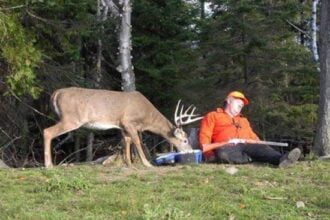

Several years ago when I held a Q&A session following a keynote address to an audience of healthcare professionals, I was asked the question: “Kevin, what does the hospital of the future look like?” I pondered it for a moment and responded, “It looks like your living room!” Well, we’re getting close. A small startup company – CellScope – has developed a device that moves us in that direction. The device connects to an iPhone (naturally) and produces a view of the tympanic membrane inside the ear which is magnified by a factor of 10X. So, rather than taking the screaming baby to the emergency room for treatment in the middle of the night, the users can capture and upload the images of a possible ear infection to the CellScope web platform where notes can be added by the parents on other associated symptoms.
According the CellScope CEO, Erik Douglas – in most cases – the information provided via CellScope to the physician on call is enough to determine if a prescription needs to be called to the pharmacy. CellScope raised its funds from Khosla Venture to develop the smart-phone-connected otoscope. The technology was originally developed at the University of California-Berkeley by Daniel Fletcher, a bioengineer, where the small microscope used in CellScope has been used in developing countries to diagnose tuberculosis on a remote basis. So, if the tool is priced right and available at any pharmacy, it could very easily become part of the home arsenal that parents adopt to help care for their children. Douglas claims that the price will be similar to iPhone devices which are increasingly available on the web. A crying baby with an ear infection is not uncommon.
In fact, some 30 million medical visits are made in the USA each year due to pediatric ear infections. CellScope is just the beginning of a move toward home devices which can assist in diagnosis. There are a large number of small companies working on health-related devices and applications for smart phones. Other examples which have been reported in the media of late include patients tracking their fitness, taking and managing blood glucose levels, and even a device that detects malaria using a mobile phone connected to a device. Juniper Research predicts there will be 142 million downloads of mobile health apps by 2016. Next on the list? Another firm has developed a dermatoscope attachment to the iPhone which produces magnified diagnostic-quality images of skin lesions. After ear infections, a skin rash is the second leading reason for pediatric visits. So, not only is your living room becoming the hospital but your pediatrician – in many cases – could simply be available on the web.
Check out Technology Review for additional information on the approach. No doubt, the next step will be FDA approval for these devices. Jeffrey Shuren, who leads the FDA’s Center for Devices and Radiological Health, says that the FDA doesn’t want to regulate all apps – just those that act as medical devices or contribute to the clinical decision-making. It’s clear that those of us who are interested in the appropriate use of technology for enhancing care delivery need to become more engaged in this issue.
photo:livingroom/shutterstock









